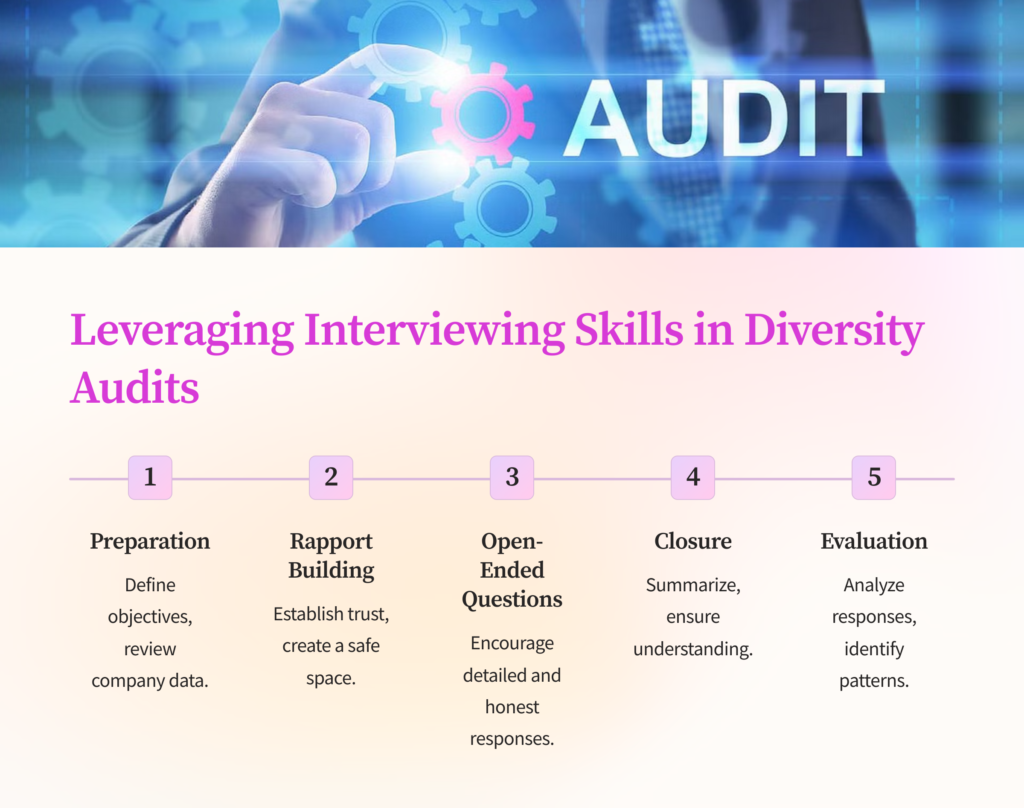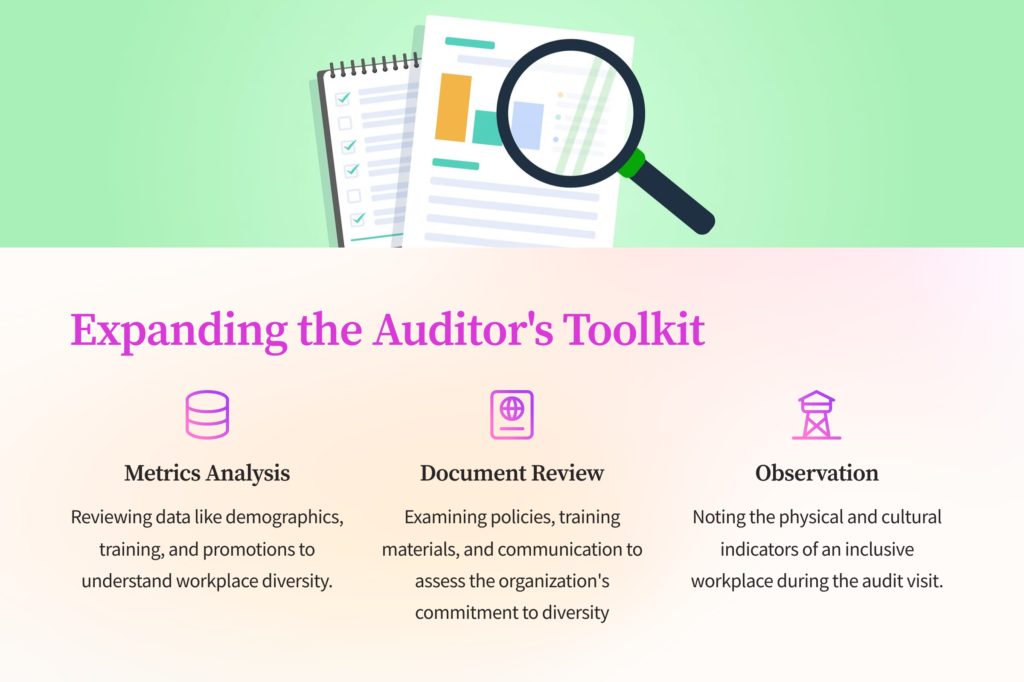In today’s global business landscape, diversity is not just a buzzword—it’s a crucial pillar of a responsible and sustainable business model. As organizations strive to build inclusive environments, the role of ESG audits in promoting and evaluating workplace diversity has become increasingly significant. This blog delves into the essence of diversity within the corporate realm, underscores its importance for companies, and elucidates how ESG audits can be instrumental in fostering diverse workplaces.
Understanding Diversity in the Workplace
Diversity in the workplace transcends the mere acknowledgment of differences in race, gender, age, religion, disability, sexual orientation, and other socio-economic factors. It encompasses the appreciation and integration of these differences to create an environment where every individual has the opportunity to contribute to the organization’s success and feel valued for their unique perspectives. This inclusive approach not only enhances employee satisfaction and engagement but also drives innovation, problem-solving, and competitiveness in the market.
The Business Imperative for Diversity
Embracing diversity is not just ethically right; it’s a strategic business decision. Diverse companies are more likely to outperform their peers, attract top talent, and retain employees. Furthermore, a diverse workforce better mirrors the global marketplace, enabling organizations to cater to a wider array of customer needs and preferences. As businesses increasingly recognize these benefits, promoting diversity becomes an integral part of responsible business conduct, underscoring a commitment to fair practices and equal opportunities for all.
Auditing Diversity: Why It Matters
ESG audits play a pivotal role in assessing how well companies are integrating diversity into their operational and cultural fabric. By evaluating policies, practices, and workplace dynamics, auditors can identify gaps between a company’s stated diversity commitments and its actual practices. This process not only highlights areas for improvement but also reinforces the organization’s dedication to creating an inclusive environment, thereby enhancing its reputation and appeal to socially conscious investors, customers, and prospective employees.
The Complexity of Auditing Diversity
Auditing diversity presents unique challenges, primarily due to its multifaceted nature and the subjective experiences of employees. Unlike other audit areas where compliance can be measured against clear-cut standards, diversity encompasses intangible elements such as perceptions of inclusivity, respect, and equal treatment. This complexity requires auditors to adopt a nuanced approach, employing both quantitative metrics and qualitative assessments to capture the true essence of an organization’s diversity landscape.
Leveraging Interviewing Skills in Diversity Audits
Effective interviewing is a critical tool for auditors tackling the topic of diversity. Through skillful questioning, auditors can gain insights into the lived experiences of employees, uncovering not just the presence of diverse individuals within the company but also the depth of their integration and participation. The following strategies, drawn from the comprehensive interviewing techniques outlined in the PEACE model and the pioneering work of Dr. Shawn Christopher Shea, can enhance the effectiveness of diversity audits:
1. Preparation and Planning: Before conducting interviews, auditors should familiarize themselves with the organization’s diversity policies, previous audit findings, and any relevant legal and regulatory frameworks. This preparation enables the auditor to ask informed questions that probe the effectiveness of diversity initiatives.
2. Engaging and Establishing Rapport: Creating a supportive and open interview environment encourages candidness. Auditors should demonstrate cultural sensitivity and empathy, acknowledging the diverse backgrounds and experiences of interviewees.
3. Account Gathering: Using open-ended questions allows auditors to explore employees’ perceptions of diversity and inclusivity within the company. Probing techniques can help uncover not just overt discrimination but also subtler forms of exclusion.
4. Closure: Summarizing the discussion and clarifying any ambiguities ensure that the auditor accurately captures the interviewee’s experiences and perspectives on workplace diversity.
5. Evaluation: Reflecting on the interview process and outcomes helps auditors assess the effectiveness of their questioning technique and the reliability of the information gathered.

Expanding the Auditor’s Toolkit
To further enhance their ability to audit diversity, auditors can employ additional strategies such as:
– Diversity Metrics Analysis: Reviewing quantitative data such as demographic statistics, diversity training participation rates, and promotion and retention rates among diverse employee groups.
– Document Review: Examining policies, training materials, and communication to assess the organization’s commitment to diversity.
– Observation: Noting the physical and cultural indicators of an inclusive workplace during the audit visit.

Conclusion
Auditing diversity is a complex but rewarding endeavor that requires auditors to employ both analytical skills and empathy. By leveraging effective interviewing techniques and adopting a comprehensive approach to assessment, auditors can provide valuable insights that drive organizations towards more inclusive, equitable, and thus, successful practices. As businesses continue to navigate the challenges and opportunities of a globalized market, the role of ESG audits in promoting workplace diversity will undoubtedly grow, underlining the importance of continuous learning and adaptation in the auditing profession.
